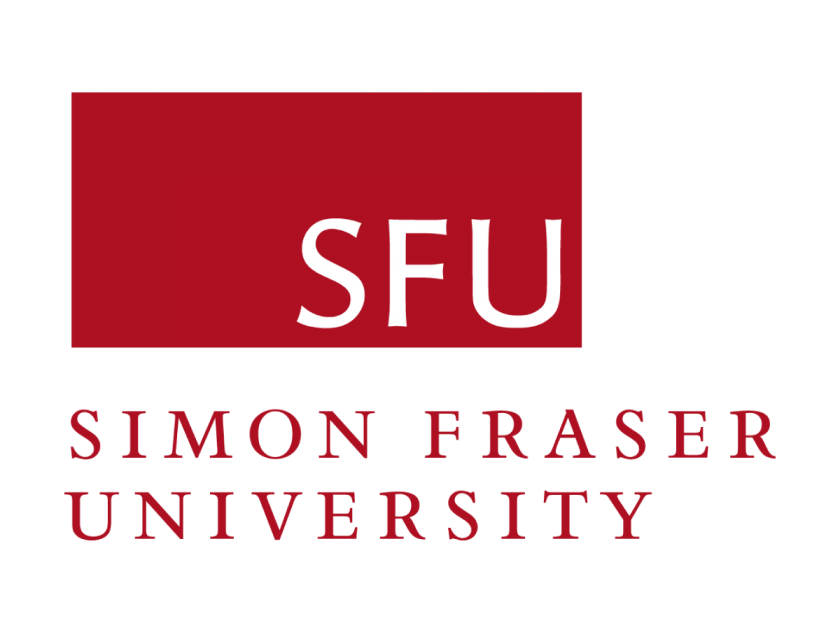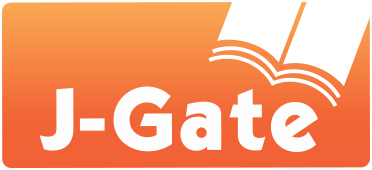Complexity, Fluency, and Accuracy in Written Works of Vietnamese Learners of English: A Replication Study
DOI:
https://doi.org/10.54855/ijte.25522Keywords:
Dynamic System Theory (DST), environment interaction, time-series design, language assessmentAbstract
Recent studies applying Dynamic Systems Theory (DST) have shown language acquisition's non-linear, indiscrete, chaotic, and highly context-dependent nature. However, limited research has explored these dynamics in English as a Foreign Language (EFL) context. To evaluate DST’s applicability in EFL settings, this study partially replicates Larsen-Freeman’s (2006) investigation by tracking the language development of four upper-intermediate Vietnamese EFL learners. The study employed the Dynamic Description approach, in which the participants were required to take written tests every three weeks over three months. Their performance across four dimensions - accuracy, fluency, lexical complexity, and syntactic complexity- was examined through both quantitative and qualitative analyses. Although the findings revealed similarities with the original study, the learners’ development trajectories differed, proving that the learners were interacting with their surrounding EFL context. These findings underscore the significance of learning contexts on language acquisition and offer valuable insights into more context-sensitive teaching practices.
References
Beckner, C., Blythe, R., Bybee, J., Christiansen, M. H., Croft, W., Ellis, N. C., Holland, J., Ke, J., Larsen-Freeman, D., & Schoenemann, T. (2009). Language is a complex adaptive system: Position paper. Language Learning, 59(s1), 1-26. https://doi.org/10.1111/j.1467-9922.2009.00533.x
Bygate, M., Skehan, P., & Swain, M. (2001). Researching pedagogic tasks: Second language learning, teaching, and testing. https://ci.nii.ac.jp/ncid/BB17915922
Caspi, T. (2010). A dynamic perspective on second language development. [Doctoral dissertation, University of Groningen]. s.n.
Costa, A. S., Dogan, I., Schulz, J. B., & Reetz, K. (2019). Going beyond the mean: Intraindividual variability of cognitive performance in prodromal and early neurodegenerative disorders. The Clinical Neuropsychologist, 33(2), 369-389. https://doi.org/10.1080/13854046.2018.1460735
De Bot, K. (2008). Introduction: Second language development as a dynamic process. The Modern Language Journal, 92(2), 166-178. https://doi.org/10.1111/j.1540-4781.2008.00712.x
De Bot, K., & Larsen-Freeman, D. (2011). Researching second language development from a dynamic systems theory perspective. In A dynamic approach to second language development: Methods and techniques (pp. 5-24). John Benjamins Publishing Company.
De Bot, K., Lowie, W., & Verspoor, M. (2005). Second language acquisition: An advanced resource book. Psychology Press.
De Bot, K., Lowie, W., & Verspoor, M. (2007). A dynamic systems theory approach to second language acquisition. Bilingualism: Language and cognition, 10(1), 7-21. https://doi.org/10.1017/S1366728906002732
De Bot, K., Lowie, W., Thorne, S. L., & Verspoor, M. (2013). Chapter 10. Dynamic systems theory as a comprehensive theory of second language development. In Contemporary approaches to second language acquisition (pp. 199–220). John Benjamins Publishing Company. https://doi.org/10.1075/aals.9.13ch10
Dong, J. (2016). A dynamic systems theory approach to development of listening strategy use and listening performance. System, 63, 149-165. https://doi.org/10.1016/j.system.2016.10.004
Dörnyei, Z. (2014). Researching complex dynamic systems: ‘Retrodictive qualitative modelling’ in the language classroom. Language Teaching, 47(1), 80–91. https://doi.org/10.1017/s0261444811000516
Dörnyei, Z., & Murphey, T. (2003). Group dynamics in the language classroom. Cambridge University Press.
Dörnyei, Z., MacIntyre, P. D., & Henry, A. (2014). Motivational dynamics in language learning. In Multilingual Matters eBooks. https://doi.org/10.21832/9781783092574
Drummond, A. (2018). Investigating the relationship between IELTS scores and receptive vocabulary size. Journal of the Foundation Year Network, 1, 113-125. https://jfyn.co.uk/index.php/ukfyn/article/download/13/23
Ellis, R., & Barkhuizen, G. (2005). Analysing learner language. Oxford University Press.
Eskildsen, S. W. (2012). The development of construction learning in a second language: The relation between chronological age and proficiency. Applied Linguistics, 33(2), 131-149.
Fischer, K., Yan, Z., & Stewart, J. (2005). Adult cognitive development: Dynamics in the developmental web. Handbook of developmental psychology, 491–516. https://doi.org/10.4135/9781848608306.n21
Godwin-Jones, R. (2018). Chasing the butterfly effect: Informal language learning online as a complex system. Language Learning & Technology, 22(2), 8–27. https://doi.org/10125/44643
Harshbarger, B. (2007). Chaos, complexity and language learning. Language Research Bulletin, 22, 17-31.
Hunt, K. W. (1965). Grammatical structures written at three grade levels. National Council of Teachers of English. https://ci.nii.ac.jp/ncid/BA19525648
Huynh, T. (2021). A complex dynamic systems approach to foreign language learners’ anxiety in the emergency online language classrooms. Computer-Assisted Language Learning Electronicl Journal, 22(3), 200-229.
Kinginger, C. (2008). Language learning in study abroad: Case studies of Americans in France. Modern Language Journal, 92(s1), 1–124. https://doi.org/10.1111/j.1540-4781.2008.00821.x
Kramsch, C. (2012). Why is everyone so excited about complexity theory in applied linguistics? Mélanges Crapel, 33, 9-24.
Krashen, S. D. (1982). Principles and practice in second language acquisition. Pergamon Press.
Larsen-Freeman, D. (1997). Chaos/complexity science and second language acquisition. Applied Linguistics, 18(2), 141-165. https://doi.org/10.1093/applin/18.2.141
Larsen-Freeman, D. (2006). The emergence of complexity, fluency, and accuracy in the oral and written production of five Chinese learners of English. Applied Linguistics, 27(4), 590-619. https://doi.org/10.1093/applin/aml029
Larsen-Freeman, D. (2009). Adjusting expectations: The study of complexity, accuracy, and fluency in second language development. Applied Linguistics, 30(4), 579-589. https://doi.org/10.1093/applin/amp043
Larsen-Freeman, D., & Cameron, L. (2007). Complex systems and applied linguistics. International Journal of Applied Linguistics, 17(2), 226-240. https://doi.org/10.1111/j.1473-4192.2007.00148.x
Lewis, M. (2002). Cultures of teaching: Voices from Vietnam. ELT Journal, 56(2), 146-153. https://doi.org/10.1093/elt/56.2.146
Lewontin, R. (2000). The triple helix: Gene, organism, and environment. Harvard University Press.
Lightbown, P. (1983). Exploring relationships between developmental and instructional sequences in L2 acquisition. In H. Seliger & M. Long (Eds.), Classroom-oriented research in second language acquisition (pp. 217–243). Newbury House.
Lightbown, P., & Spada, N. (2006). How languages are learned: An introduction to the main theories of first and second language acquisition (now in a New, Updated Edition). Oxford University Press.
McLaughlin, B., Rossman, T., & McLeod, B. (1983). Second language learning: An information-processing perspective. Language Learning, 33(2), 135-158. https://doi.org/10.1111/j.1467-1770.1983.tb00532.x
Morrison, K. (2006). Complexity theory and education. In APERA Conference. Hong Kong.
Murakami, A. (2016). Modeling systematicity and individuality in non-linear second language development: The case of English grammatical morphemes. Language Learning, 66(4), 834-871. https://doi.org/10.1111/lang.12166
Ngo, K. T. (2025). EFL learners’ perceptions of translanguaging in English classes at an HCM English centre. International Journal of Language Instruction, 4(1), 50–64. https://doi.org/10.54855/ijli.25414
Nguyen, T. M. (2025). IELTS washback as a high-stakes test on student learning: A hierarchical modelling study at a Vietnamese university. International Journal of TESOL & Education, 5(1), 1–24. https://doi.org/10.54855/ijte.25511
Nguyen, T. T., & Pham, T. H. (2019). Vietnamese EFL learners’ lexical acquisition: Variability, progress, and regression. Journal of Language and Education, 5(3), 45–62.
Norris, J. M., & Ortega, L. (2009). Towards an organic approach to investigating CAF in instructed SLA: The case of complexity. Applied Linguistics, 30(4), 555-578. https://doi.org/10.1093/applin/amp044
Norton, B. (2000). Identity and language learning: Gender, ethnicity and educational change. Longman Publishing Group.
Perone, S., & Simmering, V. R. (2017). Applications of dynamic systems theory to cognition and development: New frontiers. Advances in child development and behavior, 52, 43-80. https://doi.org/10.1016/bs.acdb.2016.10.002
Plotkin, V. (2006). The language system of English. Universal-Publishers.
Polat, B., & Kim, Y. (2013). Dynamics of complexity and accuracy: A longitudinal case study of advanced untutored development. Applied Linguistics, 35(2), 184-207. https://doi.org/10.1093/applin/amt013
Robinson, B. F., & Mervis, C. B. (1998). Disentangling early language development: Modeling lexical and grammatical acquisition using an extension of case-study methodology. Developmental Psychology, 34(2), 363–375. https://doi.org/10.1037/0012-1649.34.2.363
Sidman, M. (1960). Tactics of scientific research: Evaluating experimental data in psychology. Basic Books.
Spoelman, M., & Verspoor, M. (2010). Dynamic patterns in development of accuracy and complexity: A longitudinal case study in the acquisition of finish. Applied Linguistics, 31(4), 532-553. https://doi.org/10.1093/applin/amq001
Thelen, E., & Smith, L. B. (2006). Dynamic systems theories. In R. M. Lerner & W. Damon (Eds.), Handbook of child psychology: Theoretical models of human development (6th ed., pp. 258–312). Wiley.
Van Geert, P., & Steenbeek, H. (2005). Explaining after by before: Basic aspects of a dynamic systems approach to the study of development. Developmental Review, 25(4), 408–442. https://doi.org/10.1016/j.dr.2005.10.003
Van Geert, P., & Steenbeek, H. (2008). A complexity and dynamic systems approach to developmental assessment, modeling and research. In K. W. Fischer, A. Battro, & P. Léna (Eds.), The educated brain; Essays in neuroeducation (pp. 71-94). Cambridge University Press.
Van Gelder, T., & Port, R. F. (1998). It's about time: An overview of dynamical approach to cognition. The MIT Press eBooks. https://doi.org/10.7551/mitpress/4622.003.0002
Verspoor, M., de Bot, K., & Lowie, W. (2011). A dynamic approach to second language development: Methods and techniques. John Benjamins Publishing Company.
Verspoor, M., Lowie, W., & Van Dijk, M. (2008). Variability in second language development from a dynamic systems perspective. Modern Language Journal, 92(2), 214–231. https://doi.org/10.1111/j.1540-4781.2008.00715.x
Yang, W., & Sun, Y. (2015). Dynamic development of complexity, accuracy and fluency in multilingual learners’ L1, L2, and L3 writing. Theory and Practice in Language Studies, 5(2), 298-308. https://dx.doi.org/10.17507/tpls.0502.09
Downloads
Published
Issue
Section
License
Copyright (c) 2025 Dinh Thao Nguyen

This work is licensed under a Creative Commons Attribution 4.0 International License.
The copyright of all articles published in the International Journal of TESOL & Education (ijte) remains with the Authors, i.e. Authors retain full ownership of their article. Permitted third-party reuse of the open access articles is defined by the applicable Creative Commons (CC) end-user license which is accepted by the Authors upon submission of their paper. All articles in the ijte are published under the CC BY-NC 4.0 license, meaning that end users can freely share an article (i.e. copy and redistribute the material in any medium or format) and adapt it (i.e. remix, transform and build upon the material) on the condition that proper attribution is given (i.e. appropriate credit, a link to the applicable license and an indication if any changes were made; all in such a way that does not suggest that the licensor endorses the user or the use) and the material is only used for non-commercial purposes.
Authors retain copyright and grant the journal the right of first publication with the work simultaneously licensed under a Creative Commons Attribution 4.0 International License that allows others to share the work with an acknowledgment of the work's authorship and initial publication in this journal.
Authors are able to enter into separate, additional contractual arrangements for the non-exclusive distribution of the journal's published version of the work (e.g., post it to an institutional repository, in a journal or publish it in a book), with an acknowledgment of its initial publication in this journal.











